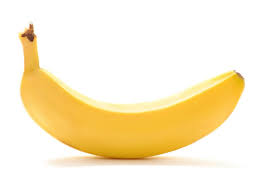Bananas and Bees Don't Mix
Drop that banana!
Sorry beekeeper, but it’s for your own safety. See, bananas make bees go, uh, well…let’s say nuts. If you’d have gulped one down, and breathed all over the colony with your banana breath, you’d have made yourself ready victim to an agitated horde. Bee forums are replete with accounts of sudden, bewildering attacks when people clutching this slender yellow fruit have entered bee territory.
“I once walked in front of my hives with a banana in hand”, says YouTube user Martin McKerrow. “I had to run to the house to escape the bees. I probably had 20 stings.”
Tammie Locke, enraged at a user-posted video suggesting the banana/bee correlation is just an ‘urban legend’, has a similar story.
“I brought a bundle of bananas to where my hives were in a field far away from other people. I stood 5ft or so away from my hives. Not much happened at first but I noticed before I got halfway through the banana the hive began getting louder and louder… They came up outa that hive so f*****g fast I thank my god-loving feet for getting me to the truck so fast and rolling up the windows, f*****g bees pinking the windows rapid fire…”
Science helps us explain the phenomena. Turns out bananas contain a compound called isoamyl acetate (also known as isopentyl acetate) – the very same as that which is in honeybees’ alarm pheromone. Pure banana oil (used in emollients, perfumes, and to broaden the flavored milk range) is nothing but this colorless liquid ester, occasionally mixed with other chemicals. While bees’ alarm pheromone isn’t just isoamyl acetate – in fact there are over 40 compounds in the cocktail – it is the main active component.
Guard bees, who patrol the entrance, and stinger bees, who comprise the militia, are the two castes within the hive most likely to release the pheromone. Both of these are worker bees (i.e. female) around 2-3 weeks old – the time it takes for their endocrine system to reach its prime. The scent – excreted from the Koschevnikov gland and other glands around the sting shaft – is released either when the bee pops out its stinger (like a cat retracting its claws), or goes full kamikaze and harpoons the mouse, robber bee or luckless human, rear-end first (inevitably dying in the assault). Having volatile properties, the ester evaporates and disperses rapidly from the origin point of the bee’s butt, making it suitable as a swift communication carrier. Once registered, it alerts the colony to the presence of an intruder or threat, lifting their aggro, and effectively coordinating an en masse defensive response. Any stray, lingering waft of a banana about you, then, will trigger a similar reaction (if slightly less intense). Don’t put too much faith in your smoker to avail you either.
As Australian beekeeper William Kwan notes however, humans are ingenious enough to have made what was once an object of their peril into an item of control.
“A lot of beekeepers, as a tip and trick to promote hygienic behavior and clean up inside the hive, […] put a banana peel in the top of the hive and seal the lid,” says Kwan. “The smell that the banana peel emits usually stimulates them to clean the hive a lot faster than it would without.”
So, unless you’re using it to corral an irritably anal hive-cleaning service, save that banana for a late-evening snack. To foster peaceful human/bee relations during hive visits? Go apple.
By Kate Prendergast

